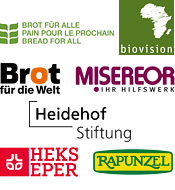News
12.10.2015
TTIP: Berlin protest against US-EU free trade deal draws 250,000

Hundreds of thousands of people marched in Berlin on Saturday to protest against planned free trade agreements between the European Union and both the United States and Canada. According to the organisers, 250,000 people took to the streets while police said 150,000 attended. Demonstrators say that the the free trade agreements TTIP (Transatlantic Trade and Investment Partnership) with the US and a similar deal with Canada, known as the Comprehensive Economic and Trade Agreement (CETA), are anti-democratic and could threaten food safety, labour, health and environmental standards. The protest was backed by more than 170 German environmental, farmers’ and development organisations, charities, labour unions, opposition parties and other groups. Several trains and more than 600 buses had been chartered to bring people from the whole country to the German capital. Carrying banners and flags and chanting slogans opposing the trade deals, protesters walked from Berlin’s main railway station and passed the Brandenburg Gate before reaching the victory column where the manifestation ended in a huge event with speeches and concerts. “This is the biggest protest that this country has seen for many, many years,” Christoph Bautz, director of citizens’ movement Campact told protesters in a speech. The organisers were overwhelmed by the large number of people, they had expected some 50,000 participants. “Together we are defending our democracy and taking to the streets for fair trade,” the organisers said. They call for a stop of the TTIP negotiations based on the current mandate and say that the existing CETA contracts cannot be ratified in their current form. Already on Wednesday, a petition with more than 3 million signatures gathered over last year against the two trade deals was submitted to the European Commission. TTIP would create the world’s largest free-trade zone with 800 million consumers and harmonise regulation between the EU and North America in areas ranging from food safety law to environmental rules. Activists fear that regulations could be watered down, for example with regard to genetically modified foods or workers benefits. Campaigners are particularly concerned about a provision in the deal that would allow companies to sue governments in special tribunals. (ab)
07.10.2015
Two thirds of EU countries opt-out from growing GM crops
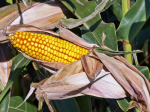
Nineteen EU member states have “opted out” of growing genetically modified (GM) crops within all or part of their territories under new EU rules. Commission spokesman Enrico Brivio confirmed to Reuters on Sunday that the Commission had received 19 formal opt-out requests following the expiry of a deadline on October 3. The 19 countries wishing to ban GMOs are: Austria, Bulgaria, Croatia, Cyprus, Denmark, France, Germany, Greece, Hungary, Italy, Latvia, Lithuania, Luxembourg, Malta, the Netherlands, Poland and Slovenia, with Belgium asking for a ban in the Wallonia region and the UK for Scotland, Wales and Northern Ireland, leaving only England open to GM crop cultivation. Germany requested a partial opt-out that would allow biotechnology research. The requests are for opt-outs from the approval of Monsanto’s GM maize MON 810, the only crop commercially cultivated in the EU, or for eight pending applications submitted to the EU. Non-governmental organisations welcomed the news: “A clear majority of the EU’s governments are rejecting the Commission’s drive for GM crop approvals,” said Greenpeace’s EU food policy director Franziska Achterberg. “They don’t trust EU safety assessments and are rightly taking action to protect their agriculture and food. The only way to restore trust in the EU system now is for the Commission to hit the pause button on GM crop approvals and to urgently reform safety testing and the approval system.” Under the new EU directive, adopted in March, individual countries can ask biotech companies, whose GM crops have already been authorised for cultivation in the EU or are in the process of authorisation, not to market their crops on their territory. If these companies - such as Dow, Monsanto, Syngenta and Pioneer – refuse these opt-outs requests, member state may ban or restrict the cultivation of the crop for reasons relating to the environment or agricultural policy objectives. (ab)
05.10.2015
EU countries must do more to halt biodiversity loss by 2020, report
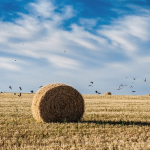
The European Union has made little progress in halting biodiversity loss and the degradation of ecosystem services, according to the mid-term review of the EU biodiversity strategy, published by the European Commission on Friday. The report assesses whether the EU is on track to achieve its biodiversity targets in six main areas by 2020. The results show that progress has been slow in most areas and that Member States need to undertake greater efforts. “Nature’s capacity to clean the air and water, to pollinate crops and to limit the impacts of catastrophes such as flooding is being compromised, with potentially significant unforeseen costs to society and our economy”, the European Commission said. When the EU adopted the biodiversity strategy in 2010, up to 25% of European animal species were facing extinction and 65% of habitats were in an unfavourable conservation status. In the meantime, the number of species and habitats with a positive or improved conservation status has increased slightly. While populations of common bird species have started stabilising since 2010, farmland birds have continued to decline. Pollination services are in steep decline with multiple pressures on wild bees, the report warns. In addition, grassland butterflies are declining severely and there is no sign of levelling off. “The key threats to biodiversity – habitat loss (in particular through urban sprawl, agricultural intensification, land abandonment, and intensively managed forests), pollution, over-exploitation (in particular fisheries), invasive alien species and climate change – continue to exert pressure, causing the loss of species and habitats and weakening ecosystem resilience.” The EU-28 footprint is still more than twice its biocapacity, taking a heavy toll on biodiversity outside Europe. With regard to the third target, increasing the contribution of agriculture and forestry to maintaining and enhancing biodiversity, the EU has made no significant overall progress. According to the report, the reformed Common Agricultural Policy (CAP) provides a range of instruments that can contribute to supporting biodiversity. However, if the third biodiversity target is to be achieved, these opportunities need now to be taken up by Member States on a sufficient scale. The authors stress that local examples demonstrate successful sustainable agricultural practices, which, if implemented more broadly, could put the EU back on track to achieve the target by 2020. (ab)
02.10.2015
Lack of indigenous land rights hampers fight against poverty, new study

A new study reveals that indigenous peoples and local communities lack legal rights to almost three quarters of their traditional lands, hampering efforts to combat hunger and poverty, sparking social conflict and undermining plans to reduce deforestation and the impacts of climate change. The analysis, conducted by the Rights and Resources Initiative (RRI), shows that only 18% of land worldwide is formally recognised as either owned by or designated for indigenous peoples and local communities. Yet they claim or have customary use of as much as 65% of the world’s land area. “This report spells out the catastrophic failure of governments to respect the basic land rights of more than one billion people,” said Andy White, Coordinator of RRI. “While government leaders are negotiating international agreements to end poverty and stop climate change, they are failing to match these commitments at home. Too many governments are still handing out local peoples’ lands for economic developments that exploit natural resources, accelerate climate change and destroy livelihoods.” The study identified the land area in 64 countries that is formally recognised under national statutes as owned or controlled by indigenous peoples and local communities. Special attention was given to 12 countries in the analysis that are included in the World Bank’s list of fragile states, such as Chad, Democratic Republic of the Congo and Iraq. In ten of these countries, most of the territory is owned by the government or the private sector and not by the people who live there. According to the authors, progress in recognising community-based land rights is strikingly weak in these fragile states. Only 2% of the land there is controlled by indigenous peoples and local communities, and a fraction of 1% is owned by them, the report said. Past studies have shown that land ownership by indigenous and local communities has many benefits for rural lands and natural resources because they conserve the nature of their territories best, keep the carbon in the trees and ground, thus slowing climate change. Indigenous and local communities today have legal or official rights to at least 513 million hectares of forests, about one eighth of the world’s total. According to the report, these forests store around 37.7 billion tonnes of carbon, 29 times more than the annual emissions of the world’s cars. (ab)
28.09.2015
UN adopts new global goals, hunger and agriculture at the heart of 2030 agenda

The 193 Member States of the United Nations formally adopted the new 2030 Agenda for Sustainable Development with 17 global goals at the start of a three-day special summit in New York on Friday. The new framework, entitled “Transforming Our World: the 2030 Agenda for Sustainable Development”, contains 17 goals (SDGs) and a set of 169 targets that aim to end poverty and hunger, fight inequality and tackle climate change over the next 15 years. “The new agenda is a promise by leaders to all people everywhere. It is an agenda for people, to end poverty in all its forms – an agenda for the planet, our common home,” UN Secretary-General Ban Ki-moon said at the opening of the summit which also heard speeches from Pope Francis and Nobel laureate Malala Yousafzai. Ban Ki-moon underlined that the true test of commitment to the new goals will be their implementation: “The 2030 Agenda compels us to look beyond national boundaries and short-term interests and act in solidarity for the long-term. We can no longer afford to think and work in silos.” The new agenda concludes a negotiating process that began three years ago with the 2012 UN Conference on Sustainable Development, Rio+20. The 17 SDGs will replace the Millennium Development Goals, which will expire at the end of this year. Goal 2 promises to „end hunger, achieve food security and improved nutrition and promote sustainable agriculture”. It contains targets on ending hunger and malnutrition by 2030, doubling the agricultural productivity and incomes of small-scale farmers, ensuring sustainable food production systems and resilient agricultural practices, and maintaining the genetic diversity of seeds, plants and animals. FAO Director-General José Graziano da Silva reminded world leaders that this second goal must be urgently pursued as ending hunger is a precondition for achieving other goals. Worldwide, 800 million people are still suffering from chronic undernourishment. “We have given ourselves an enormous task, that begins with the historic commitment of not only reducing but also eradicating poverty and hunger in a sustainable way,” da Silva said during his speech. “We need to build more sustainable agriculture and food systems, that are resilient to stresses and better able to cope with - and respond to - climate change impact,” he added. Civil society organisations welcomed the adoption of the ambitious goal 2 but also stressed that decisive action is needed. Greenpeace, for example, critisised that much of the language is vague and fails to address the root and structural causes of hunger and unsustainability. The environmental organisation is therefore concerned that this may result in a “doing more of the same” rather than promoting any real political change. Greenpeace warned that Goal 2 must not be used as a way to promote chemical-intensive agriculture inputs (like pesticides, genetically modified seeds and chemical fertilisers). Instead, these targets should be translated into action through wide-scale support for the uptake of ecological farming to maintain ecosystems and improve soil quality while increasing productivity and resilience to climate change and other shocks. (ab)
- UN adopts new Global Goals, charting sustainable development for people and planet by 2030
- FAO: World's 2030 goals put hunger and agriculture at the center of global policy
- Greenpeace: Just words or a move towards a just and renewable future?
- The Guardian: Global goals received with rapture in New York – now comes the hard part
23.09.2015
Colombia to fight coca by giving land to farmers instead of using glyphosate

Colombia will change its strategy in the fight against illegal drugs by giving land to farmers who grow food crops instead of coca, President Juan Manuel Santos announced as the country stops fumigating coca crops with the herbicide glyphosate. Part of the new anti-drug policy is to provide poor campesinos alternatives to illicit coca crops, the raw material for cocaine, by funding the cultivation of legal crops. Farmers will receive government aid and technical advice in order to undertake other agricultural projects suited to the area’s traditions. The program also includes plans to establish rural cooperative centres, which organise the storage and distribution of farmers’ produce and help them gain access to markets. Those who grow legal crops for more than five years will be granted property titles for the lands they cultivate so that they can become legal landowners. “With this programme we hope to have a twofold result: reducing the illicit cultivation and improving the living conditions of hundreds of thousands of peasants,” Santos said on Tuesday in a speech on national TV. The plan will first be implemented with some 26,000 families that produce coca in the southern provinces of Putumayo and Nariño. “Today begins a new era in the fight against drug trafficking in our country,” Santos told journalists. “If we are successful, we will cease to have such a sad distinction of being the largest exporter of cocaine. And we will be a country that cares for the environment, increases food security in the world and provides opportunities for its farmers.” He confirmed that starting on October 1, Colombia will stop fumigating coca crops with glyphosate, a method the country has used since 1994 under a coca eradication plan with financial support from the United States. In May, the Colombian government announced to halt aerial spraying after a research arm of the World Health Organization reclassified the herbicide as ”probably carcinogenic”. According to a UN report, cocaine production in Colombia had increased more than 50% from 2013 to 2014. Coca was grown on 69,000 hectares in 2014. This is 100,000 hectares less than in 2000 but cultivation has been on the rise for the past two years. More than 80% of coca is grown in just six provinces. The previous government approach of destroying crops without providing alternatives to the farmers has failed to stop drug-trafficking and only increased poverty in rural areas. Santos said the new policy is also supported by the guerrilla group Revolutionary Armed Forces of Colombia (FARC), with whom the government has been engaged in peace talks since 2012. (ab)
21.09.2015
Civil society rejects Climate Smart Agriculture, calls for agroecology
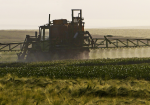
As climate negotiations are gaining momentum ahead of the UN climate conference COP21 in December, civil society organisations have voiced deep concerns about the growing influence of a concept called “Climate-Smart Agriculture” (CSA) and urged decision-makers to support agroecology instead. In a joint statement published on Monday, a coalition of 355 civil society groups, social movements, farmers’ and faith-based organisations from around the world warned that CSA is falling short of ensuring food and nutrition security, undermining the radical transformation of current food and agricultural systems that is urgently needed. The Global Alliance for Climate Smart Agriculture (GACSA) was launched one year ago with the aim of “addressing the challenges facing food security and agriculture under a changing climate” and “scaling up the climate smart agriculture approach”. As of 18th September, among its members were only ten developing countries and three farmers’ organisations, whereas 60% of the private sector membership of the alliance is related to the fertiliser industry, for example Yara International or Fertilizers Europe. Transnational corporations with poor environmental or social records such as Monsanto, Walmart and McDonalds have launched their own “climate-smart agriculture” programs. According to the civil society coalition, CSA is a meaningless and dangerous concept without any clear definitions, criteria or standards, thus opening the doors for greenwashing. Agribusiness corporations that promote synthetic fertilisers, industrial meat production and large-scale industrial agriculture, all of which are recognised as contributing to climate change, can call themselves climate-smart. With new instruments for international climate finance being put in place to spend billions of dollars, the coaltion fears that projects and programmes will be funded that direct resources towards false solutions. The organisations therefore urge decision-makers at national and UN levels to reject CSA and endorse agroecology as the mainstream pillar of agricultural policy frameworks worldwide. Agroecology is a holistic approach to agriculture, based on principles of ecology as well as food and nutrition security, food sovereignty and food justice which seek to enhance agricultural systems by using and recycling natural resources instead of relying on external inputs. In addition, the coalition highlight that agroecology encourages local food production by small food producers and family farmers, and is based on techniques that are developed from farmers’ traditional knowledge and practices which improve biodiversity and crop diversity. (ab)
16.09.2015
Land degradation costs the world $10.6 trillions a year: report
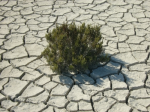
Land degradation costs the world trillions of dollars worth of nature’s benefits each year and could force the migration of millions of people from affected areas, a new UN-backed report has warned. The report, published on Tuesday by the Economics of Land Degradation (ELD) Initiative, estimates the value of ecosystem services provided by land such as agricultural production, water filtration, nutrients cycling and climate, but also the importance of land in reducing poverty and food insecurity. According to the authors, land degradation is costing the world US $6.3 trillion to $10.6 trillion annually, or the equivalent of 10-17% of global GDP. More than half of the world’s agricultural land is moderately or severely degraded. The report cites figures from the UN’s Convention to Combat Desertification (UNCCD), which say that land degradation may drive an estimated 50 million people from their homes within the next 10 years. “We do not value our land resources,” warns UNCCD Executive Secretary Monique Barbut, “Land degradation eats away at our fertile land. That is our common resource base.” Land degradation is not only affecting agricultural production, it also means that less land is available to to store carbon. According to the report, soil is second only to oceans as the planet’s largest carbon sink, while agriculture and land use changes represent the second largest source of greenhouse gas emissions. Addressing land degradation and its causes therefore represents a double-sided way to reduce greenhouse gas emissions, could help avert a humanitarian crisis and add US $75.6 trillion to annual world income, the authors write. They call for the implementation of more sustainable land management in order to tackle environmental and socio-economic challenges such as food, water, and energy security, climate change and the loss of biodiversity. The report recommends various instruments for policy makers to enable the adoption of sustainable land management. These include bans to ensure that products harmful to health or environmental quality such as pesticides are not used; taxes and fees to raise the cost of production or consumption of environmentally damaging goods and subsidies for those who implement sustainable land management practices. The Sustainable Development Goals (SDGs), to be adopted by the UN later this month, also focus on land resources. Goal 15 aims to “Protect, restore and promote sustainable use of terrestrial ecosystems, sustainably manage forests, combat desertification, and halt and reverse land degradation and halt biodiversity loss.” (ab)
14.09.2015
Poor diet leading cause of early death worldwide, study finds

Unhealthy eating is the most common cause of premature death across the globe, a new study has found. Poor eating habits, including diets low in fruit, whole grains, and vegetables, and diets high in red meat, sugar, sodium and cholesterol, were implicated in 21% of premature deaths worldwide because they contribute towards ischemic heart disease, strokes and diabetes. The study is the most recent update on the 2010 report on the Global Burden of Disease, which is recognised as the most authoritative work on the causes of ill-health. Published in the medical journal The Lancet on September 11, the study was led by the Institute for Health Metrics and Evaluation (IHME) at the University of Washington. “There’s great potential to improve health by avoiding certain risks like smoking and poor diet as well as tackling environmental risks like air pollution,” said IHME Director Dr Christopher Murray. “The challenge for policymakers will be to use what we know to guide prevention efforts and health policies.” The researchers looked at data from 188 countries from 1990 to 2013 and increased the number of risk factors for premature death around the world from 67 to 79 to provide a broader picture. A combination of 14 dietary risk factors contribute to the highest number of deaths worldwide, killing more people than smoking and alcohol. Dietary risks account for 11.3 million deaths worldwide and high systolic blood pressure for 10.4 million deaths, followed by child and maternal malnutrition which was responsible for 1.7 million deaths. Smoking kills 6.1 million people every year and air pollution causes 5.5 million deaths. The scientists say that risk factor patterns vary across regions and countries. In much of Latin America and the Middle East, obesity came out as the biggest risk for poor health. Drinking alcohol is the second major risk factor in Russia and smoking is the number-one risk in many high-income countries, including the UK. The situation is different for sub-Saharan Africa, which is dominated by a deadly combination of childhood undernutrition, unsafe water and sanitation, unsafe sex and alcohol use. (ab)
10.09.2015
EU parliament votes to tighten ban on cloning farm animals

The European Parliament has voted to ban the cloning of all farm animals. The vote, which took place on 8 September, takes the Commission’s proposal a step further by extending the restriction to all farm animals, their descendants and products derived from them, including imports into the EU. “Up to now, we have been able to import reproductive material from third countries. We are washing our hands letting others do the dirty work. We want to ban comprehensively. Not just the use of cloning techniques but the imports of reproductive material, clones and their descendants,” said the environment committee co-rapporteur, Renate Sommer. The draft was adopted by 529 votes to 120, with 57 abstentions. Parliament also extended the ban to cover all species of animals kept and reproduced for farming purposes and not only cattle, sheep, pigs, goats and horses, as proposed by the Commission. According to Parliament, the high mortality rates at all development stages of cloning raise significant animal welfare and ethical concerns. The lawmakers pointed to research by the European Food Safety Authority from 2008 that the health and welfare of clones are often severely affected. Many of the animals are born with abnormalities or die within the first few weeks after birth. “We need to take into account the impact on animal health, but also on human health,” said the agriculture committee co-rapporteur, Giulia Moi. “This reports sends the message to our trade partners that we are not willing to put our own health, our families’ health, and future generations’ health at stake,” she said. The vote comes amid concerns that the transatlantic trade and investment partnership (TTIP) would allow the U.S. to import cloned animal products into the EU. In the U.S., the use of clones in food production is allowed, with milk and meat from cloned animals and their offspring being sold in supermarkets. In the EU, a majority of citizens strongly oppose food from cloned animals and the use of cloning for farming purposes. MEPs of the Greens/ European Free Alliance welcomed the vote: “Clone food brings significant concerns, with impacts in areas such as livestock management and food security, but also in terms of genetic diversity and animal welfare. It would be totally irresponsible to ignore these and plough ahead with cloning as some misguided technological fix,“ said Green agriculture spokesperson José Bové. The text also demands that the legislation become a regulation, to be applied directly in all member states rather than a directive, which would require further national legislation. The co-rapporteurs will now enter into negotiations with the Council and Commission before the regulation can become law. (ab)
